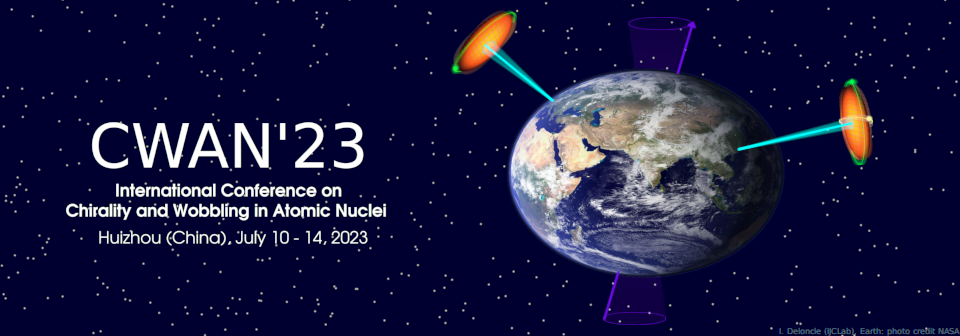Orateur
Description
PSM calculation for A~130 region
Several new bands have been identified in $^{130}$Ba, among which there is one with band-head spin 8$^+$. Its properties are in agreement with the Fermi-aligned νh$^2_{11/2}$, 7/2$^−$[523] ⊗ 9/2$^−$[514] Nilsson configuration. This is the first observation of a two-quasiparticle t-band in the A=130 mass region in experiment. The observed bands are discussed using several theoretical models including projected shell model (PSM). With the new results, $^{130}$Ba presents one of the best and most complete sets of collective excitations that a γ-soft nucleus can manifest at medium and high spins, revealing a diversity of shapes and rotations for the nuclei in the A = 130 mass region.
PSM calculation for A~160 region
There have been compelling evidences indicating that deformed single-particle (SP) states in neutron-rich regions are different from those in the stable region. It was pointed out that for the light rare-earth ($_{60}$Nd, $_{62}$Sm, and $_{64}$Gd), neutron rich (N=98−102) nuclei, the Woods–Saxon potential, the Nilsson modified oscillator potential with ‘universal’ parameters, and the folded Yukawa potential all failed to describe the correct ordering of neutron SP states. The location and size of deformed shell gaps in this mass region are under current debate. We propose a modification for the ‘standard’ Nilsson parameters of Bengtsson and Ragnarsson introduced in 1985. The proposed N-dependent spin–orbit interaction causes directly changes in deformed shell gaps with neutron number and deformation. By applying the modified Nilsson parameters to generate deformed bases for the projected shell model, we demonstrate that the calculation can explain consistently the current experimental data, including the ground state configuration in odd-neutron nuclei, upbending of the yrast moment of inertia at higher spins and the energies of 2-quasineutron 6$^−$ and 4$^−$ isomers in even–even nuclei.

